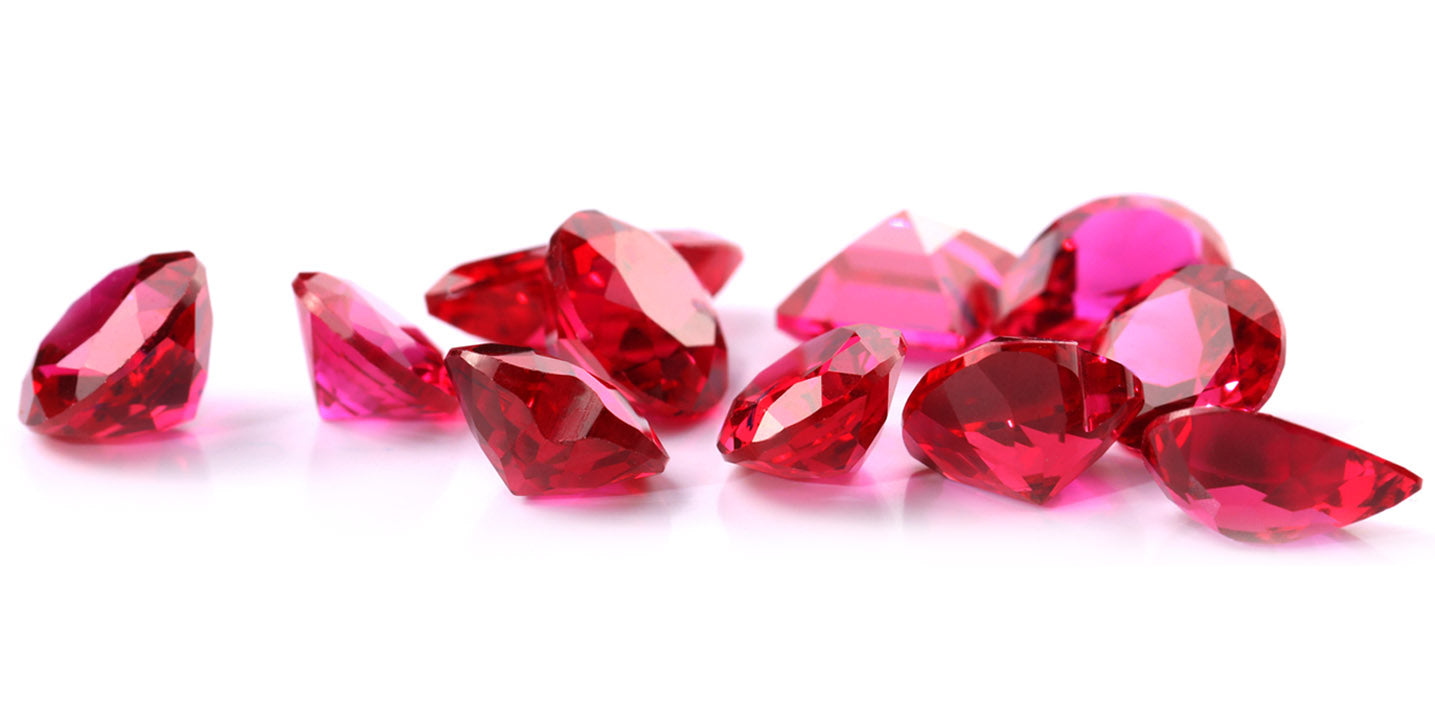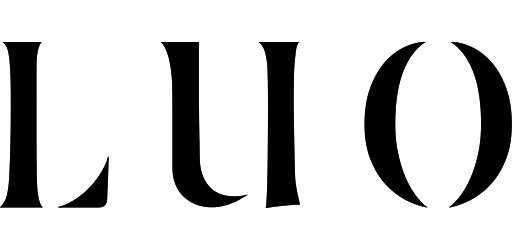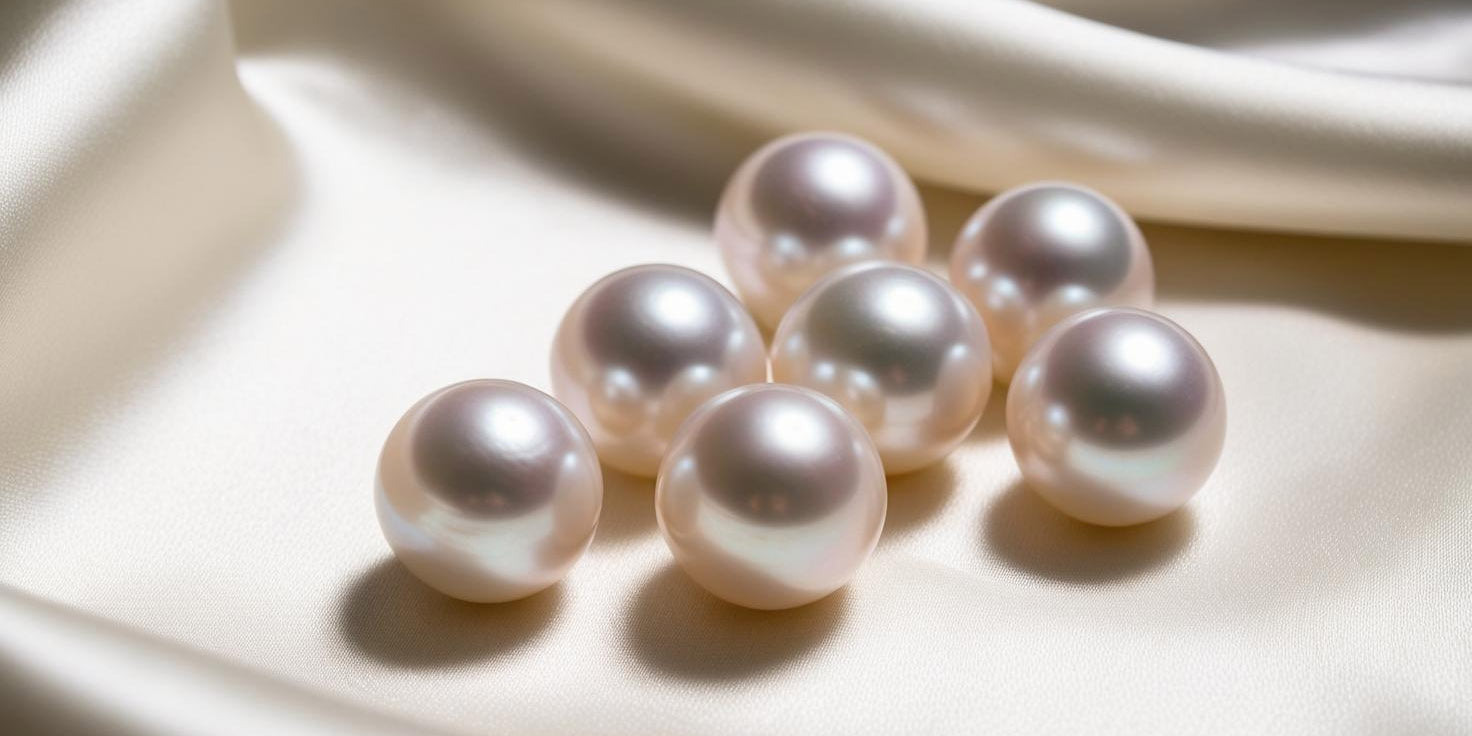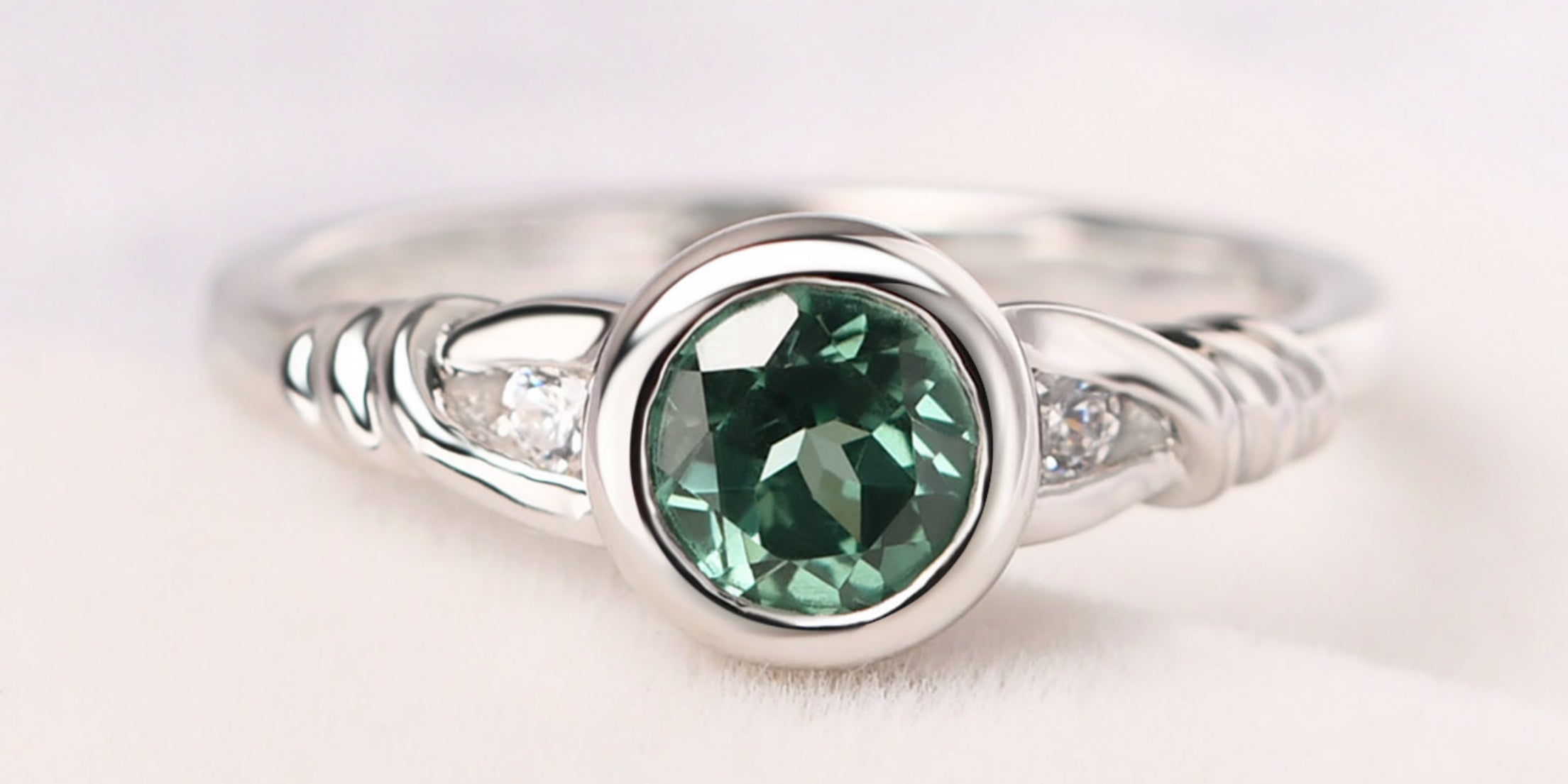
July birthstone- Ruby
What is ruby?

- Ruby is a corundum, and sapphire is also a corundum. The main chemical component of corundum is aluminum oxide.
- Ruby is known as the "stone of love". Its fiery red color is often associated with passion and love, symbolizing the eternity and perseverance of love.
- Ruby is July's birthstone and represents Gemini and Cancer in astrology.
- Ruby is also a traditional gemstone gift for the 15th and 40th wedding anniversaries.
- Rubies are divided into natural rubies and synthetic rubies.
Lab ruby gemstones vs. natural ruby gemstones
--How to distinguish a natural ruby from a lab-grown one?
After buying a ruby engagement ring, I believe most buyers want to identify whether the gem is natural or synthetic. To distinguish synthetic rubies from natural rubies, we only need to check under a microscope to see if there are impurities and defects in the ruby. The following is the difference between synthetic rubies and natural rubies
Natural rubies
Natural rubies are formed naturally in nature, and there is no other processing except cutting and polishing. Since the natural environment cannot be controlled, this kind of gem usually has flaws and impurities. Therefore, the price of good quality natural rubies is very expensive.
Lab-created ruby
Is lab ruby real ruby? Yes, lab ruby is real ruby. The full name of lab rubies is lab-created rubies or Lab-Grown Rubies and it is also called Synthetic Rubies. They are rubies created in the laboratory that are identical in composition to natural rubies and have the same physical, chemical, and optical properties. Since the laboratory can control the environment, temperature, and other conditions required for the formation of rubies, synthetic rubies are usually free of impurities and defects.
Common methods for synthesizing rubyinclude Flame Fusion, Flux Method, Hydrothermal Method
- Flame Fusion lab-created ruby is formed by dissolving the original components of the crystal in a low melting point liquid at high temperature and then cooling down to evaporate the flux and precipitate the crystal. This process simulates the process of minerals crystallizing from magma in nature.
-
The Flux Method is a crystal growth method. This is done by dissolving in a flux and slowly growing the crystals. This method produces rubies that are close to the quality of natural rubies. Although it is still artificially cultivated, due to its slow growth process, inclusions similar to natural gemstones may be formed inside, making it more difficult to identify by the naked eye, and it is often used in the high-end jewelry market.
-
The hydrothermal method is a synthetic method that simulates the growth environment of natural gemstones. It allows ruby crystals to grow slowly through high-temperature and high-pressure aqueous solutions and can produce high-quality synthetic gemstones that are extremely close to natural rubies.
How can you distinguish red CZ(Zircon) from real rubies?
Red CZ and real rubies can be very similar in color, so if you don't observe gems very often, you may not be able to distinguish between red zircon and real ruby on the surface.
However, red zircon can be identified by the following methods:
- Using a polarimeter can distinguish rubies because red zircon is a non-homogeneous gem, and it shows a four-bright and four-dark extinction phenomenon under a polarizer, while ruby is completely extinct or exhibits spotted extinction.
- Observation and comparison of refractive index, density, and spectrum can easily distinguish zircon from ruby.
The refractive index of red zircon can change due to radioactive damage to its crystal structure.

- Use a ten-fold magnifying glass to observe the gem from different directions and observe the other side of the gem through the gem. If the intersection lines on the other side become double shadows, it is red zircon. If it is still a single line, it is ruby.
The meaning of rubies
Red gemstones always symbolize warmth, love, passion, and persistence. As one of the red gemstones and the birthstone for July, ruby can also bring good luck and protection to those born in July.
If you want to buy jewelry with birthstones, Luo Jewelry is a very good choice for its high quality and customization options.
Rubies have captivated us for centuries, inspiring awe and a host of enchanting tales. While now celebrated as the birthstone for July and adorned in jewelry worldwide, their historical significance runs deep in cultural tradition, religious symbolism, and mythical lore.
The Stone of Love

The fiery red color of ruby is often associated with passion and love, symbolizing the eternity and perseverance of love. Rubies are perfect for setting in engagement and wedding rings, symbolizing love in its purest form.
Power and Leadership
In the Middle Ages, European royal families often used rubies to inlay crowns to show their authority, identity, and status. Therefore, rubies have the symbolic meaning of leadership and power.
Integrity and Devotion
Ruby is stable, durable, and hard, symbolizing firm belief and loyalty. In traditional religions, ruby is also a representative of piety and purity.
Passion and Energy

The color of ruby is as bright red as blood. Red-toned gemstones usually symbolize vitality and a fighting spirit, just like garnets, which symbolize passion and vitality. Warriors always wear red gemstones before fighting to wish themselves peace and protection.
Sexuality and Fertility
In India, rubies are believed to enhance fertility and improve intimacy between couples.
The legend of the ruby gemstone
In the Bible, the value of wisdom is likened to that of rubies, underscoring their immense worth in ancient times.
In the Christian tradition, rubies are intertwined with spirituality and heritage. According to the Book of Exodus in the Old Testament, the high priest's breastplate bore twelve stones representing the tribes of Israel, with the ruby occupying a prime position as a symbol of Judah—the tribe from which monarchs reportedly emerged. The ruby's prominence didn't stop there; its influence stretched across kingdoms. In Imperial China's Qing Dynasty, rubies adorned the crowns of aristocracy and high-ranking officials. Their fiery hue distinguished wearers as individuals of power and prestige.

But beyond religion and royalty. In Myanmar, an enchanting legend spoke of "flashing red gems" hidden within a bottomless valley. Brave locals would throw raw meat into the abyss, hoping gemstones would cling to the meat when vultures carried it away. Later, they retrieved these dazzling treasures by hunting the birds.
Ancient beliefs hold rubies as not just treasures but as things with extraordinary powers. It was said that wearing a ruby promised health, pr
osperity, wisdom, and love while bringing comfort during difficult times. Legends claimed their presence could transform enemies into allies or shift bad luck into blessings. Some cultures even believed in embedding rubies into warriors' skin, as the gemstones would render them invincible in battle.
Roman writer Pliny the Elder introduced another perspective on rubies during his time. Known by the Romans as "carbunculus", these gems fascinated jewelers capable of enhancing their brilliance with metal settings to amplify light and color.
Whether it is revered as a royal emblem, center stage in legendary fables, or cherished as a divine symbol of faith and hope, rubies have been—and likely will remain—gems that ignite passions across cultures and ages. Rubies are fragments of human history and imagination.
Ruby Jewelry

Ruby has always been a favorite gemstone, so ruby jewelry is bound to be loved.


